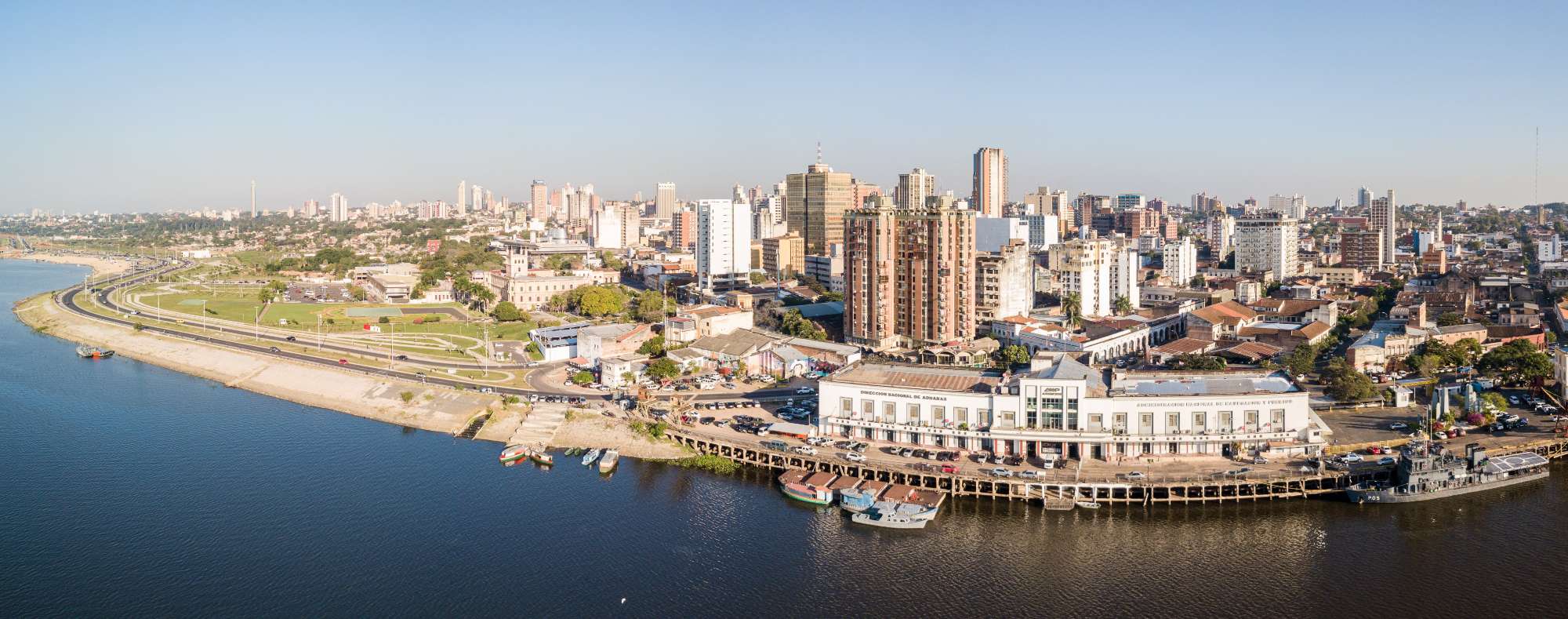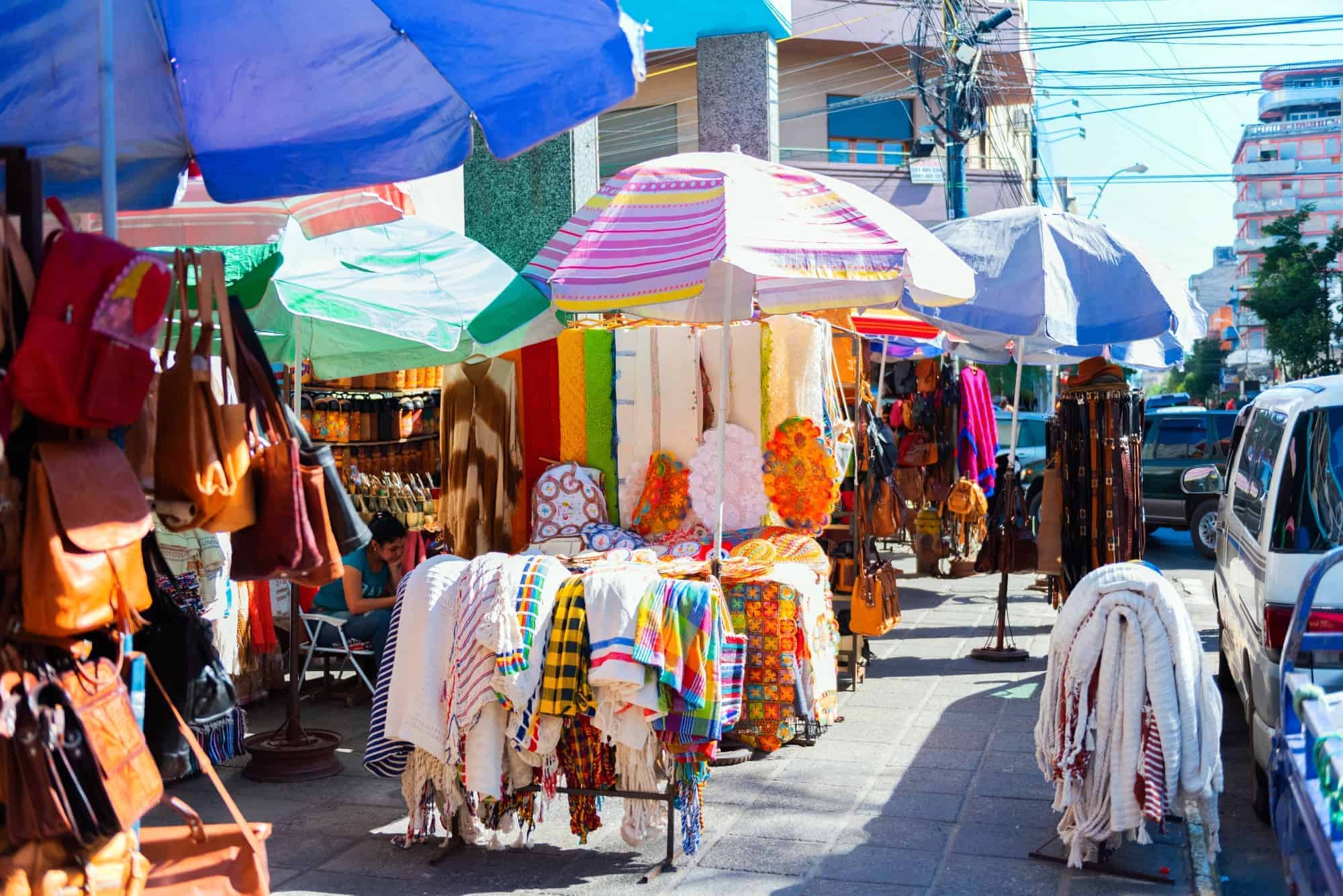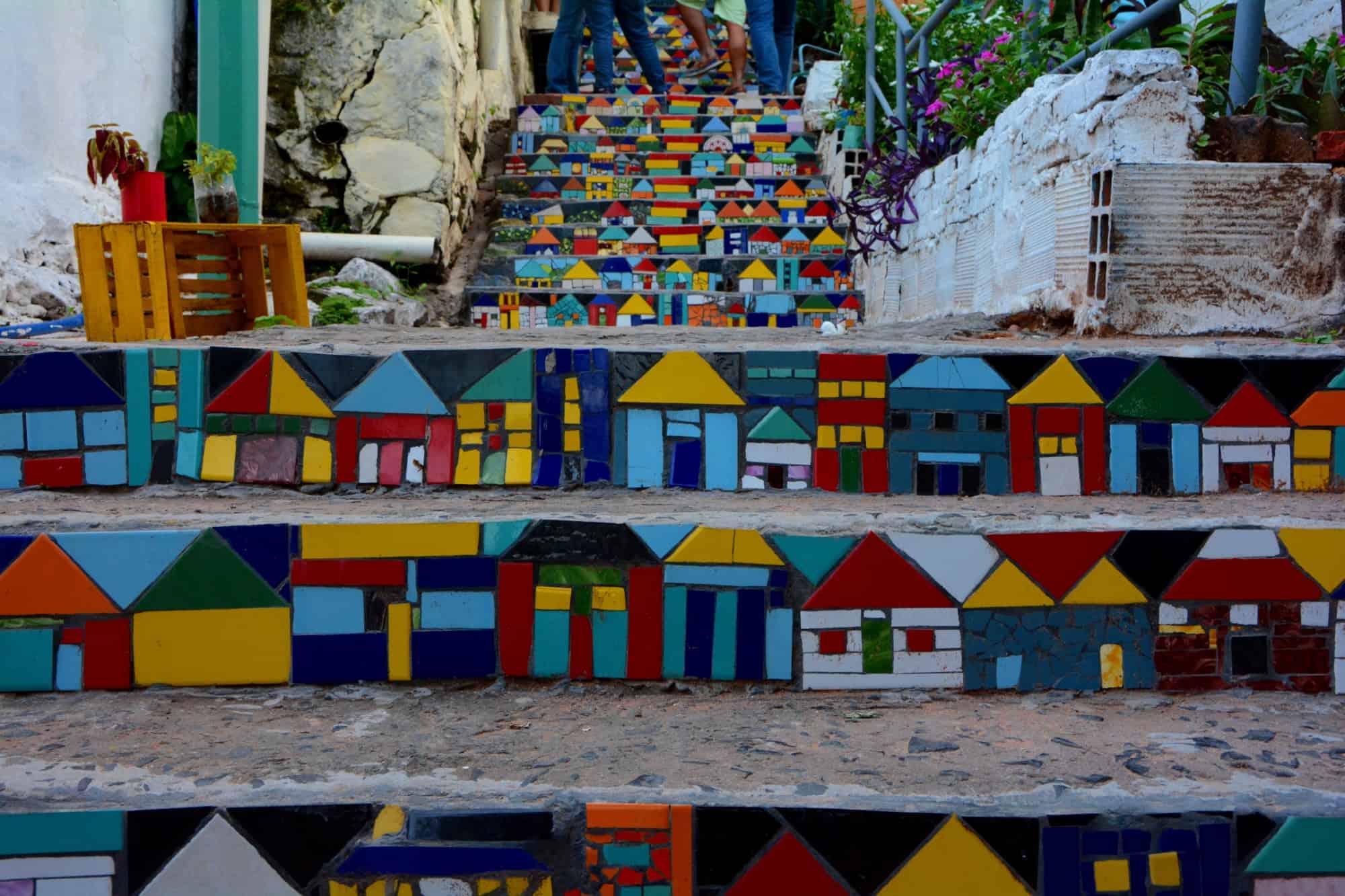Sitting on the shores of a wide bay on the east bank of the River Paraguay, Asunción, the capital and principal city of Paraguay, is one of the most affordable cities in the world.
Its historic centre lies around the bay with more modern developments spreading away from it in every direction.
In this guide, we will talk about what living in Asunción is like for expats and what you need to know before you move here.
Secure Peace of Mind with Best-Value International Health Coverage
International Citizens Insurance provide free, no-obligation quotes from the leading international health insurance providers with plans tailored to meet your needs. Trusted by thousands of expats worldwide.
What is Asunción like?
Asunción is sometimes referred to as the Mother of Cites as, in addition to being one of the oldest cities in Spanish South America, it is also the longest continuously inhabited site within the River Plate Basin, having been founded in 1537.
The city centre though is mostly mid-19th century in appearance. This was a time when the then-president sought to modernize the country and its capital.
This was also a time when Paraguay received some of the first steam trains in the Americas and built the first iron foundry in South America.
Unfortunately, as so often happens, one ruler’s good deeds are undone by his successors. As it was in Paraguay.
The son inherited the presidency and, within a few years, was at war with both Argentina and Brazil. A war that would prove deeply damaging for Paraguay and that would set its development back decades.
The poverty into which the country fell prevented for a long time any further modernizations and has left the historic centre as a well-preserved 19th-time capsule.
Where to shop, dine out and meet with friends in Asunción
Asunción, prior to its 20th-century expansions, was a relatively small city. The compact center with all its museums and historic buildings can be comfortably explored entirety on foot.

Running through the center is Calle Palma, the city’s main shopping street. It's a delightful mixture of modern and traditional shops, coffee bars, restaurants, and souvenir shops.
It is also home to street money traders who seek to exchange the dollars of anyone who walks by. More reliable foreign exchange is found in the exchange bureaus, of which there are plenty.
Calle Palma has a wide selection of cafés and is an ideal place to sit beneath a tree or sunshade and watch the world go by.
In common with everywhere in Paraguay, Calle Palma has large tree-filled plazas where the heat and the crowds can be escaped.
There are two large ones along its length, with benches under the shade of the trees and walkways cutting their way across the lawns.
Many of the trees here and all across Paraguay are lapachos - the national tree of Paraguay. In spring, they are a blaze of color with flowers, most often in pink but on occasion in white or yellow.
A lapacho in bloom is one of the most traditional images of Paraguay. The next most common trees are palms which grow in abundance all across Paraguay and are again one of the traditional images of the country.
The river bay and the beach
Running parallel to Calle Palma and along the shores of the bay is a very different street.
This is the Costanera, a boulevard laid out a few years ago to provide a promenade along the sweeping shore of the bay.
From here, it is possible to appreciate how Asunción would have looked to visitors arriving by boat in days gone by.

At the far end of the bay, a beach of soft white sand and sunshades has been created. This does become very crowded with the people of Asunción on a summer weekend but is quiet at almost all other times.
Although the Costanera is clean, wide, and free of traffic fumes, you can find very little shade along it. So it is more suited to an evening stroll to one under the heat of the midday sun.
The road of the Costanera also provides a much smoother and quicker route into the heart of Asunción than the old congested journey through the city.
Where to live in Asunción
Away from the historic center, Asunción spreads out in every direction. Here it is divided into numerous districts or barrios and has swallowed up little country towns into what is now Greater Asuncion.
Greater Asunción is home to half the population of the country.
It accommodates some of the most upmarket districts, such as Villa Morra, and its neighbors, such as San Blas/Recoleta, Carmelitas, or Santo Domingo.
In addition to some high-quality housing, these districts lying 4 miles from the historic center, are also home to modern shopping malls, restaurants, and international hotels.
This area is popular with expats and home to a number of coffee bars with a North American or European flavor.
Both families and those a little older can find more comfort and modernity in the area around Villa Morra.
If you want a more real Paraguay, you might want to consider the city center, which is just as safe as Villa Morra if a little worn around the edges.
And where not to live
Asuncion is, in general, a very safe city. However, in common with everywhere else in the world, there are a few areas that are best avoided.
The first of these is La Chacarita. This is the area of shanties and temporary housing lying in the center of the city between Congress and the river. Walking along the streets that run along its borders is quite safe, but there is no reason to venture inside.
On the whole, there are no unsafe districts in Asunción. There are great differences in wealth and poverty in Asunción, but most of the city housing is mixed. It is not uncommon to see a rough shack sitting next to a grand mansion.
One district that is best avoided, though, is that of Zeballos Cue. This riverside neighborhood is home to one of the largest private ports in the city.
It is also filled with low-quality housing, dirt, dust, noise, and a slaughterhouse. Not a pleasant environment.
Additionally, any low-lying riverside area made up of poor-quality housing should be avoided. Principally the north and south Bañados. They are prone to flooding whenever it rains heavily.
Expat groups in Asunción
There are a number of expat groups who meet up with varying degrees of regularity either in one of the bars in Villa Morra or in the city center. These are generally informal affairs with all comers welcome.
Asunción - a foodie’s paradise
In addition to bars and coffee shops, Villa Morra, like the rest of Asunción, is well-served by restaurants. As well as local cuisine, international restaurants are also plentiful.

All across Asunción, you can find good quality international restaurants. Some might be tucked away, for example, the Korean restaurants by the city market or the Brazilian Churrascaria steakhouse restaurants scattered throughout the city.
It is also common in Asunción for a number of restaurants to be placed together, either around a central courtyard or along a street. A number of these dining areas have been purpose-built in the city.
The food courts of the shopping centers are also worth attention. The individual restaurants are often small outlets of restaurants found elsewhere in the city, and the quality of choice is always high.
These are some of the most popular places to eat in Asunción, and often the food courts are far more crowded than the shopping centers where they sit.
They are popular places for the people of Asunción to meet, chat and dine. Accordingly, they are busy every day of the week.
Is Asunción expensive?
Asunción, even after several years of booming property prices, remains one of the cheapest cities in the world. Expats find the cost of living very reasonable.
There are apartments to rent all across the city. These are usually rented fully furnished.
For a small one-bedroom apartment, you should expect to pay from $230 (£166) in most districts to $300 (£218) per month in the more expensive ones.
Rents for larger apartments are also very reasonable. For a 3-bedroom apartment, the monthly rent is between $450 (£326) and $700 (£507). It is again depending on the area.
There are also plenty of properties offered for sale in Asunción—these range from traditional houses to modern apartments and grand mansions.
In Paraguay, it is generally the custom to calculate the value of a property from its size, with adjustments then being made to consider its fixtures and quality.
In Asunción, the standard rate is $700 (£507) per square meter rising to $1300 (£942) in the most exclusive districts.
For any property in Asunción, the monthly utilities such as electricity, water, and garbage collection will come to approximately $60 (£44).
In addition, a good high-speed internet connection will cost a further $30 (£22) per month.
For a meal, you should expect to spend between $10 and $15 (£7 and £11) in an upmarket or international restaurant but no more than $5 (£4) in those frequented by the local workers.
Is Asunción a good place for families?
If you have school-age children, Asunción is a good place to live as it offers several education options.
There are just a small number of international schools in Asunción. Although they are few in number, they do all provide a high-quality education.

Of these, the most exclusive is The American School of Asunción. This has been providing education to the children of diplomats and the elite for almost 70 years.
It has a cost that reflects its exclusivity and, with fees starting from $700 per month, is far more expensive than any of the other educational establishments in the city.
The school is situated in a good area of central Asunción and is both bilingual and multicultural. The academic curriculum followed is the American one, with semesters mirroring those in the USA.
Classes are offered from Kindergarten to Grade 12, and as would be expected from such an elite establishment, its reputation and results are excellent.
A more accessible establishment financially is The Pan American International School which is based in the suburb of Luque.
This is a newer school, having only been founded in 1993. It has built over the years a very good academic record.
It is also bilingual and multicultural. Possibly more so than the ASA, for while 50% of the students are Paraguayan, the other 50% are drawn from nearly 30 other countries.
It offers the full range of school years from Kindergarten to Grade 12 and also follows the American curriculum.
The school fees are far lower than at the ASA, reflecting its much broader client base. Here they range from $40 to $100 per month, depending upon the intensity of education the students require.
Another option for French-speaking expats is the French school.
This is the Lycee Francais International Marcel Pagnol. It has been providing a first-class education to French-speaking students for many years.
Like the ASA, it is located in central Asunción.
The curriculum followed is the French one, as is the school year. Once again, all school grades are catered for.
In terms of fees, the school is roughly equal to the Pan American at a cost of $60 to $100 per month.
For expats with children who are more comfortable in French than English, it would prove an excellent alternative to English language schools.
You can also find good quality private schools away from Asunción, but they usually require fluency in Spanish.
Traveling around Asunción
Walking
To travel around the districts of Asunción, walking is often sufficient and sometimes the quickest. The avenues are tree-lined and not overcrowded with other pedestrians.
However, on a hot summer day, doing so may be more of an ordeal than a pleasure.
Furthermore, the pavements themselves are often broken and uneven, and the kerbs are high.
Ramps have been added in many places, but quite often, you can find high steps along the way, which may be inconvenient for an elderly person and difficult for a child in a pushchair.

Buses
To travel greater distances within Asunción, the two options available are the bus and the taxi. Both are safe and easy to use.
Buses operate on a single fixed fare for anywhere within Greater Asunción. A standard bus will cost you 30c, and you will pay 50c for an air-conditioned one.
An air-conditioned bus may cost more, but it is always a less crowded and more comfortable way to travel. The standard buses are often full of standing as well as sitting passengers and get very warm on a summer afternoon.
This is an authentic way to travel around Asunción, close to the sights, sounds, and smells of the city.
Drivers only stop for long enough to collect fares and will be on the move again long before everyone has found a seat—something anyone traveling Asunción by bus must soon get used to.
There are no bus timetables, so catching a bus is a case of waiting at the stop until the right one comes along.
The routes taken by the buses can be a little complicated and unclear. To help overcome this, a bus always displays a list of the principal roads and landmarks it will pass to assist passengers in selecting the right one.
Many buses follow similar routes, so it is often best to look for a place name rather than a bus number.
Taxis
The other option is a taxi. Taxis are everywhere in Asunción, parked on almost every street corner awaiting customers.
The costs are very reasonable, just a few dollars to get from one side of Asunción to the other.
Furthermore, in recent times, Uber has begun operating in Asunción, increasing the options and keeping the prices down. Most, although not all, are metered.
If the only available taxi either is without a meter or does not have it switched on, ensure to get a price agreed upon before setting out to avoid any nasty surprises.
After dark, it is standard practice to add a premium to the fare.
Where to get your culture boost in Asunción
Around Asunción, there are a number of parks and museums to enjoy. The majority of the museums are within the city center, whereas the parks are spread right across the city.
The largest of the parks is the Botanical Gardens, just a few miles outside the city center. This was in the 19th-century presidential park and still retains a couple of buildings from that era. One now houses the Natural History Museum.
This holds examples of much of the fauna of Paraguay and a small ethnographic collection. It is also a favorite amongst children as one room is filled with jars of preserved specimens, including such curiosities as a whale's eye and a two-headed calf.
The gardens themselves are ideal for a pleasant walk or a picnic. Here along the pathways and under the trees, Asunción is at its most peaceful, and the noise and bustle of the city is far away.
Living in Asunción - summary
There is much to be seen and done in Asunción and its environs, and with a low crime rate, it is an easy and enjoyable city to live in.
All that is to be expected of a modern city is to be found there side by side with the features of an older, more traditional one.
For most, it is the first port of call in Paraguay, for it is here that the foreign embassies and the government ministries are located. Then for many, this most likable of cities becomes somewhere to call home.
You might find useful:
- Living In Paraguay – The Expats’ Essential Guide
- The Best Places To Live In Paraguay For Expats
- The Expat Guide To UK Pensions Abroad: Understand Your Options
Secure Peace of Mind with Best-Value International Health Coverage
International Citizens Insurance provide free, no-obligation quotes from the leading international health insurance providers with plans tailored to meet your needs. Trusted by thousands of expats worldwide.




